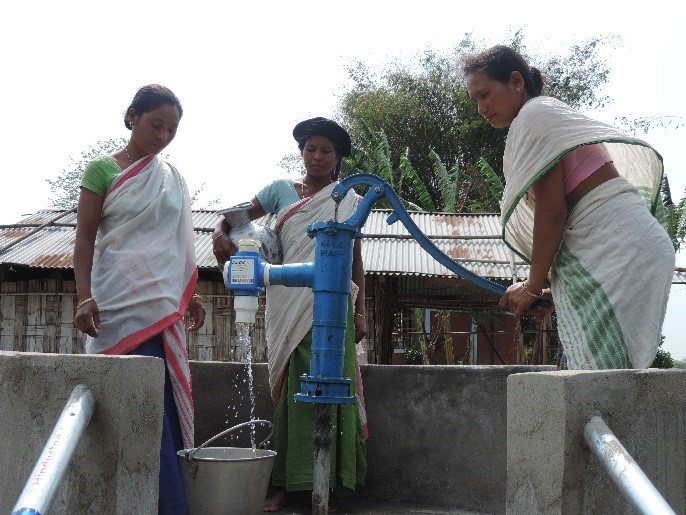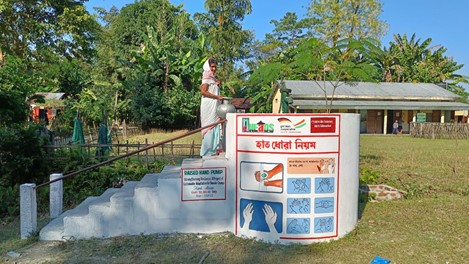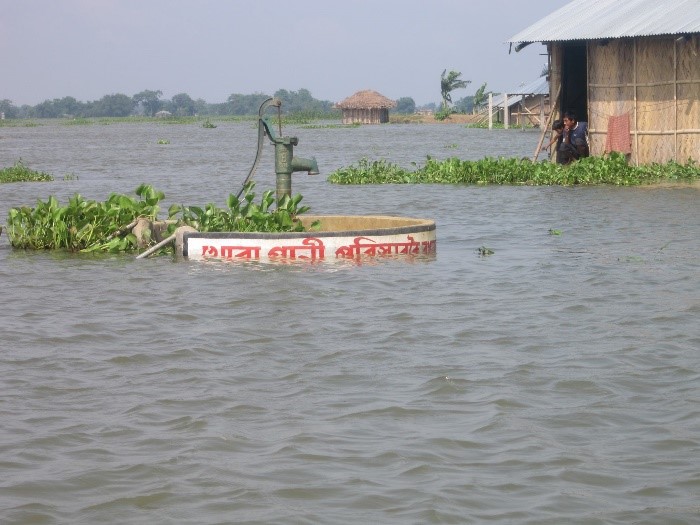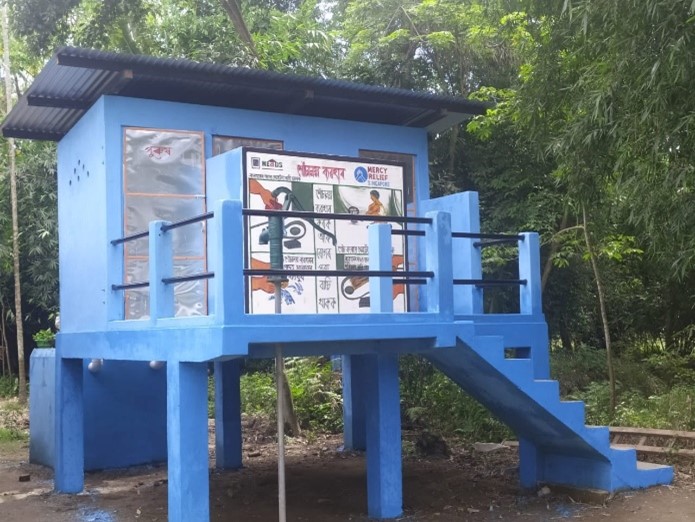Raised Hand-pumps and Toilets with Hand-wash Facilities

Innovative Flood-Resistant Infrastructure for Community-Based Good Practices in Assam
Introduction
The flood-prone areas in Assam face numerous challenges during the monsoon season, including the contamination of water sources and sanitation facilities. In response to these challenges, the implementation of raised handpumps and toilets with handwash facilities has emerged as a community-based good practice. This innovative approach not only addresses the immediate needs of flood-affected communities but also contributes to long-term resilience and public health.




Initiative of North-East Affected Area Development Society (NEADS)
NEADS, a member of India Humanitarian Hub (IHH) has been pioneering flood-resistant infrastructure in the affected communities, introducing raised handpumps and toilets with handwash facilities. These innovative solutions aim to address the challenges posed by annual floods, ensuring essential services remain accessible even during disasters. By elevating handpumps and integrating handwash facilities with flood-resilient toilets, NEADS is promoting community-based good practices that enhance hygiene and health in flood-affected areas. This initiative underscores the importance of adaptive infrastructure in building resilience and improving quality of life in vulnerable communities. This approach of NEADS demonstrates innovative thinking and community engagement towards sustainable development in flood-prone regions of Assam.
Background: Floods in Assam lead to water contamination and the destruction of sanitation infrastructure, posing significant health risks for affected communities. The implementation of raised handpumps and elevated toilets with handwash facilities serves as an adaptive measure to ensure continued access to clean water and improved sanitation during flood events.
Community-Based Good Practices: The use of raised handpumps and toilets with handwash facilities involves the construction of infrastructure designed to withstand flooding. These community-driven practices aim to enhance the resilience of essential services, promoting Community-Based Good Practices: The use of raised handpumps and toilets with handwash facilities involves the construction of infrastructure designed to withstand flooding. These community-driven practices aim to enhance the resilience of essential services, promoting better health outcomes and minimizing the risk of waterborne diseases in flood-affected areas.
The Key Components:
- Raised Handpumps: Handpumps are elevated on platforms or structures above anticipated flood levels. This design prevents water contamination during floods, ensuring that communities have access to clean and safe drinking water even in the aftermath of inundation.
- Elevated Sanitation with Handwash Facilities: Sanitation facilities, including toilets and handwash stations, are constructed on raised platforms to prevent damage and contamination during floods. Proper handwashing facilities contribute to hygiene practices, reducing the risk of waterborne illnesses.
- Community Engagement: The construction, maintenance, and management of raised infrastructure involve active participation from the community. Local community play a crucial role in adapting these facilities to their specific needs, building a sense of ownership and responsibility.
- Inclusive Design: The raised infrastructure is designed to be inclusive, considering the needs of all community members, including vulnerable groups such as children, elderly individuals, and those with disabilities.
Benefits of Raised Infrastructure:
- Continuous Access to Clean Water: Raised handpumps ensure that communities have a safe source of clean water even during floods, preventing waterborne diseases and addressing a critical need for survival.
- Improved Sanitation Practices: Elevated toilets with handwash facilities contribute to improved hygiene practices, reducing the risk of diseases and promoting overall community health.
- Community Empowerment: Involving the community in the planning and implementation of raised infrastructure develop a sense of empowerment, encouraging the communities to actively contribute to the resilience and well-being of their own people.
- Adaptability to Local Conditions: Raised infrastructure can be adapted to the specific conditions of each community, considering the local topography and flood patterns. This ensures that the solutions are effective and sustainable in the long term.
Conclusion: Raised handpumps and toilets with handwash facilities represent a forward-thinking approach to address the water and sanitation challenges faced by flood-affected communities in Assam. By integrating community engagement, inclusive design, and adaptability to local conditions, these initiatives not only provide immediate relief during floods but also contribute to the long-term resilience and well-being of the communities. As climate change continues to impact vulnerable regions, community-based good practices like these exemplify the importance of innovative, adaptable, and sustainable solutions for the unique challenges faced by flood-prone areas in Assam.
